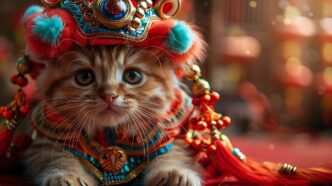Vedic Astrology offers one of the most profound and detailed systems for assessing relationship compatibility, a cosmic roadmap designed to reveal the karmic, emotional, and practical dynamics between two individuals. For anyone seeking a lifelong partner or wishing to understand an existing relationship, this ancient Indian science provides a multi-layered analysis that goes far beyond simple sun-sign comparisons. Centered on the Moon’s position at birth, it evaluates everything from subconscious temperament and sexual chemistry to spiritual alignment and potential longevity. The primary tool, known as Ashta Kuta Milaan, is a 36-point system that serves as an initial litmus test, but a true compatibility reading involves a comprehensive synastry of both individuals’ complete birth charts, offering unparalleled insight into a partnership’s potential for harmony and growth.
Understanding the Core Philosophy
Unlike Western astrology, which often places emphasis on the Sun sign to define personality, Vedic Astrology (or Jyotish) considers the Moon (Chandra) to be the seat of the mind, emotions, and consciousness. Your Moon sign and, more importantly, your Moon’s Nakshatra (lunar mansion), reveal your deepest psychological patterns and emotional responses. Therefore, compatibility is primarily judged by how well two minds and hearts can connect on this subtle, subconscious level.
The fundamental belief is that relationships are not random occurrences but are extensions of our karmic journey. The birth chart, or Janam Kundali, is a map of the karma an individual is born with. When two charts are compared, an astrologer can see the karmic interplay between them—the debts and gifts they bring to each other’s lives. This perspective transforms the idea of compatibility from a simple question of “Do we get along?” to a more profound inquiry: “What are we meant to learn and experience together?”
The Main Event: Ashta Kuta Milaan (The 8-Point Match)
The most widely used technique for marriage compatibility is the Ashta Kuta Milaan, or the “eight-point matching” system. This method compares the birth Nakshatras of the prospective couple and assigns points based on eight different criteria, totaling a maximum of 36 points, or Gunas. A score of 18 or higher is generally considered acceptable for marriage, with higher scores indicating more natural harmony.
It is crucial to understand that this score is a quantitative starting point, not a final verdict. A high score with other severe afflictions in the charts can still lead to trouble, while a low score can often be mitigated by other positive planetary alignments and conscious effort.
1. Varna Kuta (1 Point): Work Ethic and Spiritual Development
This Kuta assesses the inherent spiritual and ego development of the partners, classified into four Varnas: Brahmin (priestly/intellectual), Kshatriya (warrior/ruler), Vaishya (merchant/business), and Shudra (service/labor). A match is considered best when the partners belong to the same Varna or when the male’s Varna is higher than the female’s, suggesting he can spiritually guide the relationship.
2. Vashya Kuta (2 Points): Mutual Attraction and Influence
Vashya evaluates the degree of mutual control or amenability between partners. The signs are categorized into five types: Manav (human), Vanchar (wild animal), Chatushpad (four-legged), Jalchar (water creature), and Keet (insect). This Kuta indicates who will be the more dominant or influential partner and whether the attraction is magnetic and manageable.
3. Tara Kuta or Dina Kuta (3 Points): Destiny and Relationship Longevity
This is a critical Kuta for determining the overall fortune and well-being of the relationship. It is calculated by counting the position of the female’s birth Nakshatra from the male’s and vice-versa. Certain counts are considered highly auspicious, indicating good health, happiness, and a long-lasting bond, while others can suggest challenges.
4. Yoni Kuta (4 Points): Sexual and Physical Compatibility
Perhaps one of the most fascinating aspects, Yoni Kuta assigns an animal symbol to each of the 27 Nakshatras, revealing primal sexual nature and physical compatibility. Animals with a natural friendship (e.g., horse and buffalo) create a strong match, while sworn enemies (e.g., mongoose and snake) indicate sexual conflict or dissatisfaction. This provides a raw, instinctual look at the physical chemistry between two people.
5. Graha Maitri Kuta (5 Points): Psychological and Mental Friendship
This Kuta assesses compatibility by examining the relationship between the ruling planets of the couple’s Moon signs. If the planetary lords are friends (e.g., Sun and Mars), it indicates a strong mental connection, natural friendship, and similar life perspectives. If they are enemies (e.g., Sun and Saturn), it can point to fundamental differences in opinion and psychological friction.
6. Gana Kuta (6 Points): Temperament and Core Nature
Here, Nakshatras are divided into three temperaments: Deva (divine, pious, gentle), Manushya (human, worldly, a mix of good and bad), and Rakshasa (demonic, dominant, potentially aggressive). A match between two people of the same Gana is ideal. A Deva-Manushya match is acceptable, but a Deva-Rakshasa match can be very challenging due to a fundamental clash in temperament and life values.
7. Bhakoot Kuta (7 Points): Emotional Intimacy and Family Welfare
Bhakoot Kuta analyzes the zodiacal distance between the couple’s Moon signs. Favorable placements, like 1/7, 3/11, or 4/10, promote emotional intimacy, love, and overall family happiness. Inauspicious placements, like the dreaded 6/8 or 2/12 positions, can indicate serious conflicts, emotional distance, financial troubles, or health issues within the relationship.
8. Nadi Kuta (8 Points): Health, Genetics, and Progeny
Holding the most weight, Nadi Kuta is paramount for assessing health, heredity, and the potential for having healthy children. The Nakshatras are classified into three Nadis (or humors) based on Ayurvedic principles: Adi (Vata), Madhya (Pitta), and Antya (Kapha). A couple with the same Nadi is said to have a serious affliction called Nadi Dosha, which can lead to health problems, infertility, or issues with children. Therefore, having different Nadis is essential for a good match.
Beyond the Score: A Deeper Astrological Synastry
A seasoned astrologer knows that the Guna score is just the tip of the iceberg. A truly comprehensive analysis must dive into the individual charts to understand the complete picture. A couple might have 30 out of 36 Gunas but still face immense challenges if other critical factors are ignored.
Mangal Dosha (Kuja Dosha)
One of the most feared afflictions in marital astrology is Mangal Dosha. It occurs when Mars is placed in the 1st, 4th, 7th, 8th, or 12th house of the birth chart. Mars is a planet of energy, aggression, and passion. When placed in these sensitive houses, it can cause conflict, arguments, dominance issues, or even separation. The traditional remedy is for both partners to have Mangal Dosha, as the energies are believed to “cancel” each other out.
The 7th House: The House of Partnership
The 7th house in the birth chart is the primary domain of marriage and all legal partnerships. An astrologer must analyze the strength of the 7th house lord, any planets placed within the 7th house, and any planets aspecting it. A strong, unafflicted 7th house and its lord in both charts is a powerful indicator of a stable and happy marriage.
The Role of Venus and Jupiter
Venus (Shukra) is the universal significator of love, romance, pleasure, and harmony. Its placement and strength reveal one’s ability to give and receive love. Jupiter (Guru) is the planet of wisdom, fortune, and expansion. In a female’s chart, Jupiter is the primary significator of the husband. The condition of these two benefic planets in both charts is vital for a blissful and prosperous union.
Navamsa Chart (D9)
For a truly granular analysis, astrologers turn to the divisional charts, particularly the Navamsa or D9 chart. This chart is considered the “fruit” of the main birth chart and reveals the inner dharma, spiritual path, and, most importantly, the true nature of one’s spouse and marital life. Strong connections between the main birth chart (D1) and the Navamsa chart of both partners indicate a deep, soul-level bond that transcends superficial compatibility.
Conclusion: A Tool for Empowerment, Not a Verdict of Fate
Vedic Astrology compatibility is not a system designed to label relationships as “good” or “bad.” Rather, it is a diagnostic tool that provides an incredibly detailed roadmap of a partnership’s inherent strengths and potential fault lines. It empowers individuals with the wisdom to understand their partner’s core nature and their own, fostering compassion and highlighting areas that may require conscious work and communication. By revealing the cosmic blueprint of a relationship, it offers couples the ultimate guide to navigating their shared journey with awareness, patience, and profound understanding.








